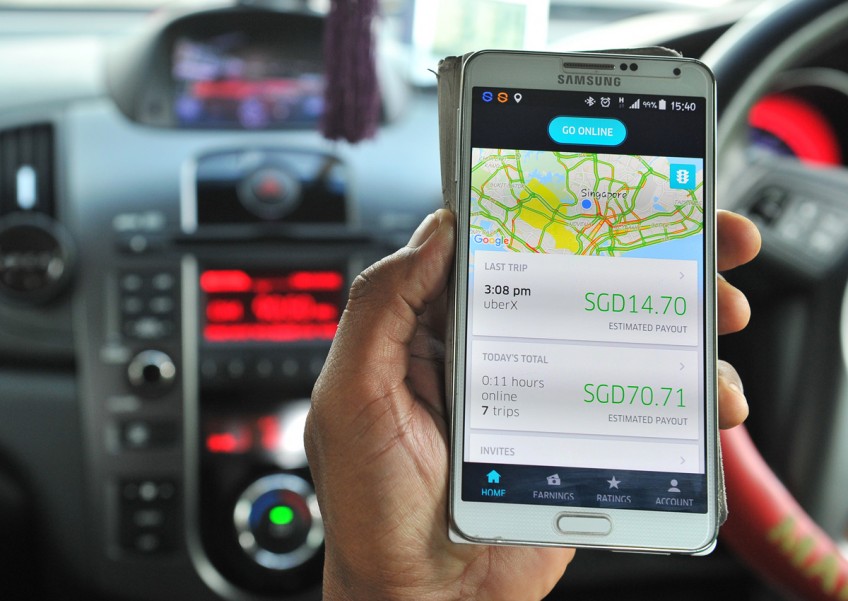Some gaps in rules on private-hire cars

Cabbies around the world have rallied against ride-hailing apps such as Uber, staging protests in cities from Kuala Lumpur to Buenos Aires.
Their main complaint is that unregulated and unlicensed drivers are competing unfairly with them.
On Tuesday, the Singapore Government announced a set of "light-touch" regulations requiring drivers from services like Uber and GrabCar to be licensed, undergo background checks and medical screenings and register their cars.
The rules, revealed after a six-month review of the sector, have provided clarity on what were grey areas. They are welcome news for commuters who may have once been hesistant to tap an app to order a private car, driven by a non-professional .
By the middle of next year, all Uber and GrabCar drivers will have to display their licences and mark their cars with decals, offering reassurance to passengers that their service is bona fide.
As private entities, Uber and GrabCar have had no access to their drivers' criminal records for background checks. They worked around this by either requiring drivers to make a legal declaration of their criminal history or hiring a third-party screening agency to find out.
This will likely no longer be an issue as the Government plans to license each of the 8,000 to 10,000 private-hire car drivers here.
But the rules, targeted mainly at drivers, only address one cog in the wheel of the Uber business model, which also involves car rental firms and insurers.
Uber and the likes are tech companies responsible for pairing up driver and passenger, and leave the actual business of transportation to third-party independent contractors.
In Singapore, many private-hire car drivers lease vehicles from rental firms, which maintain the cars and insure them commercially. While taxi operators must send their cabs for inspections every six months and maintain fleets that are no older than eight years, the same rules do not apply to rental firms.
Uber and GrabCar said they evaluate the condition of the cars before accepting them for use. After that, it is up to the rental firms to keep them road-worthy.
While all cars used for private chauffeuring must be insured commercially, it is unclear whether they all possess the same level of coverage in terms of protecting passengers or drivers in accidents.
National Taxi Association executive adviser Ang Hin Kee has suggested that the regulations spell out a standard level of insurance coverage, as they do for cab firms.
Along with the new regulations, changes have also been made to the taxi driver vocational licence course, such as shortening it from 60 hours to 25 hours.
This is still more than twice as long as the 10-hour course which has been created for private-hire drivers.
While taxi drivers have to be at least 30 years old and Singaporean, Uber and GrabCar drivers do not have such age restrictions. They can be permanent residents or work-permit holders and only have to possess a driver's licence for two years.
The bar has been lowered and rightfully so, because the bulk of private-hire car drivers - between 60 and 70 per cent, going by industry estimates - are part-timers. But will these disparities make private-hire driving a more attractive proposition than taxi driving?
Uber and GrabCar drivers are free to go onto the roads whenever they please, but cabbies face standards requiring them to clock a certain minimum daily mileage.
Taxi firms are already setting up subsidiaries to run their own private-hire fleets - an indication of where drivers' preferences are swinging towards.
The lines are becoming blurred, and in the age of the GPS and the use of apps to hail a ride, taxi driving seems to be heading towards oblivion.
To remain relevant, taxi driving must be more than just transporting a passenger from Point A to Point B. Customer service, going the extra mile, a good knowledge of routes, and knowing how to skirt traffic jams will become increasingly important in why a customer chooses a taxi.

This article was first published on April 14, 2016.
Get a copy of The Straits Times or go to straitstimes.com for more stories.